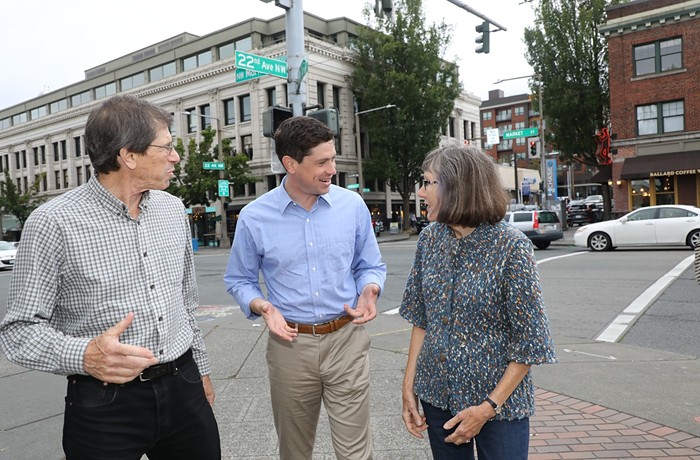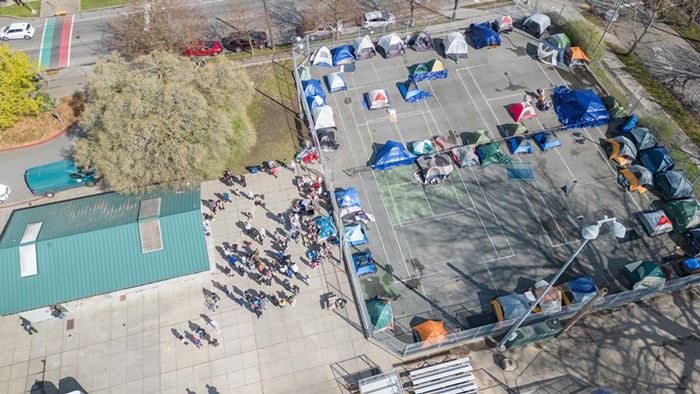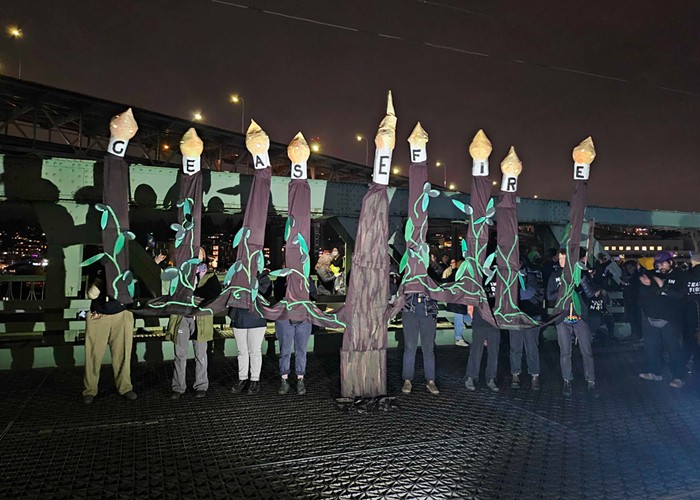
- Washington State Department of Transportation
- Why did the state quietly tell its contractor to stop digging Bertha's rescue pit in mid-December? Was it because engineers warned of imminent doom?
The Washington State Department of Transportation has not been straight with Seattle.
Last week, in a damning letter from Seattle's own Department of Transportation and Seattle Public Utilities, city officials called on the state to explain why Bertha's rescue pit engineers had apparently warned about "risk of a catastrophic failure" for the pit as early as December 11. (The same day that a growing crack in Pioneer Square caught everyone's attention.)
Ah, catastrophic failure. What more could a troubled project wish for?
This story of an alarming warning, strange editing, and even stranger communication appears to begin when Bertha's rescue pit engineers, a firm called Brierley Associates, quietly issued a draft report on the pit excavation that told the contractors to stop digging. Here’s why, according to the report: "If we continue the current 'repair as we go' method of excavation, we significantly increase the risk of a catastrophic failure."
The warning came on December 11, the same day people started freaking out about that crack in South King Street. Seattle Tunnel Partners, WSDOT’s contractor for the project, then posted the report to a document sharing site—it's unclear with whom the report was intended to be shared—on December 18. But when they did, the language in the report changed. Instead of the part about stopping excavation because it would risk catastrophic failure, the report read: "In summary, we believe that the untreated soil zones … will have a significant impact on the structural, geotechnical and hydraulic adequacy of the shaft structure."
Shifting language from "catastrophic failure" to "will have a significant impact on … geotechnical and hydraulic adequacy" is no small edit. In the first version of the report, the engineers said the excavation "shall not proceed." But by December 18, when the edited report was posted on the document sharing site, digging had been cleared to resume. So what the hell happened between December 11 and December 18 that would have made the engineers—or STP, or WSDOT—change their minds?
In the letter to the state, Seattle officials insisted on some answers. Like: What kind of catastrophic failure did the engineers mean? Was it the same catastrophic failure as whatever might happen to the "adequacy of the shaft structure"? Did the facts change? Or did the language change to cover up the facts?
The city agencies railed on WSDOT. "Brierley's directive to your contractor to stop all excavation," the letter read," is a very significant occurrence. When combined with the documented settling of the ground … we believe that an immediate dialogue between the State and City was not only warranted but necessary."
The state did not engage in an "immediate dialogue." In fact, four days after the date on the original report, WSDOT showed up at the Seattle City Council chambers and didn't mention it at all. The state did tell city council members that it had ordered the contractor to temporarily stop digging, and that excavation probably didn't cause those settlements in Pioneer Square we all heard about. (Dewatering may have—but no one was sure.)
Maybe the state didn't know about the report until December 18. Or, maybe it did.
But if excavation was going to possibly lead to catastrophe, there's another reason why we may not have seen the report yet: STP has not been digging lately.
The day after the city council meeting, December 16, the state gave STP permission to start digging for Bertha again. It said that STP had expected to begin that very night. But then last Friday, several weeks after December 16, WSDOT sent out an update saying that STP had "resumed excavating the access pit." When The Stranger asked WSDOT to clarify—STP had stopped digging again?—WSDOT spokesperson Laura Newborn said that STP had not been excavating in "the past few weeks." A project update from December 22 shows that while WSDOT had given STP permission to dig, STP took a voluntary two-week break to stabilize the soil and remove piles of earth.
"We are planning to respond to the SDOT/SPU letter tomorrow," state transportation department spokesperson Lars Erickson wrote in an e-mail to The Stranger Sunday night. "Just to clarify, the viaduct and access pit are safe and not at risk of catastrophic failure due to excavation." (Brierley Associates, the engineers who drafted the original report, declined to respond and redirected my questions to STP instead.)
Okay!
So, what does all this suggest?
- WSDOT either has been omitting information or was ignorant of the engineers' assessments when communicating with the city council.
- Something about that pit is, or was, really worrisome.
- The city is still very concerned about settlements.
- City agencies are standing up to the state.
- Today's 9:30 a.m. city council session with WSDOT is going to be interesting.
The city agencies ended their testy letter by asking WSDOT to create new plans to study the impacts of Bertha's rescue pit on the surrounding area and utilities. That means updated dewatering analysis and settlement predictions. The agencies also asked WSDOT to fork over earlier reports on dewatering, as well as all of STP’s raw survey data.
SPU also sent an additional letter to WSDOT to point out that part of a water main had settled beyond the state's maximum displacement criteria. The city’s lessened the flow in that direction in case something worse happens.
The Stranger reached out to all nine city council Members and Mayor Murray's office to see what they made of SDOT and SPU's letters. Only Council Member Sawant replied.
"Unfortunately, even without this new evidence, it has been clear that WSDOT has been vague and obfuscating in its responses," Council Member Kshama Sawant said in a statement. She added that back in 2007, the city council took a vote on what would replace the Alaskan Way Viaduct in case the deep-bore tunnel could not be completed. The resulting ordinance recommended a transit-and-surface-street alternative.
When asked what "catastrophic failure" might have meant in the context of SDOT and SPU's letter, Sawant added this: "I would like to ask WSDOT that very question before there is a danger that Pioneer Square sinks into Elliott Bay like Atlantis."


















